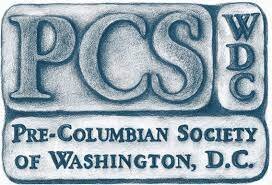George Stuart and the Archaeological Site of Etowah, GA: The Imagery of Ritual and Symbolism in Mississippian Art.
This meeting will be held in the Hurlbut Memorial Hall of the Charles Sumner School and Archive, 17th & M Streets, N.W., Washington, D.C.
This event honoring the late George Stuart will begin with light refreshments at 6:15 pm. The annual Society's business meeting will precede F. Kent Reilly's talk at 7:00 pm. Dessert, wine, and cheese will follow.
George Stuart began his career as an archaeologist when, as a high school student, he explored the Mississippian Period Mounds that surrounded his home in South Carolina. George's first real archaeological job was when he was hired by Lewis Larson to be both artist and compiler of the burial books for Larson's 1950s excavations at the multi-mound site of Etowah, GA. George's work at Etowah prepared him, both as a scholar and as an artist, for his better known work among the Maya sites of Mexico and Central America. Also, it was at Etowah that George met his wife Jean, who became his partner in many of his explorations of the vanished Classic Maya World. Since George's work at Etowah, iconographic investigations of art from various other Mississippian stylistic regions, combined with archaeological and ethnographic analyses of objects recently recovered at Etowah, reveal dramatic evidence of certain shared Mississippian ideological cults. Several spectacular works of art depict iconographically specific--and perhaps identifiable--supernatural entities as gods or heroes. Current ethnographic investigations have revealed the power-imbued stories that explain the origin of these shared Mississippian cults. Archaeological evidence of the heirlooming, bundling, and ultimate burial deposition of such art objects further link elite office holders and their descent groups with entities and episodes from these ancient and originary stories. Before his death, George was well aware of the current work at Etowah and he encouraged the recent field work in every way.
F. Kent Reilly III, PhD, identifies himself as a pre-historian whose interests converge around the religion, art, and visual validation of elite authority in New World chiefdoms and early states. Much of his research centers on the art and symbols of the ancient Olmec (1200-400 BC) and Classic Maya (AD 200-900) cultures. In 1995 he served as guest curator for Princeton University's "The Olmec World: Art, Ritual, and Rulership." His current interests include the art and iconography of the prehistoric Mississippian Period in the Southeastern United States. Dr. Reilly was a member of the advisory board and a catalog contributor to the 2004 exhibit, "Hero, Hawk, and Open Hand: Ancient Native American Art of the Midwest and South" held at the Art Institute of Chicago. Most recently, Dr. Reilly was selected by the Muscogee Nation of Florida to serve as the field anthropologist consultant to assist them with the final phase of their attempt to win federal recognition. He was selected because of his extensive knowledge of Muscogee government ceremonial cycles and traditions.
